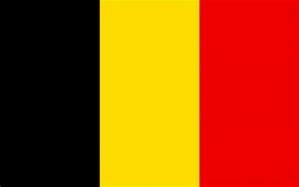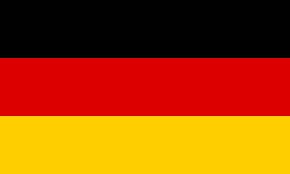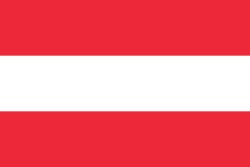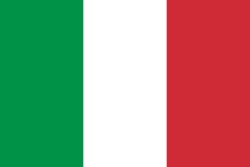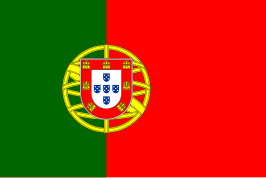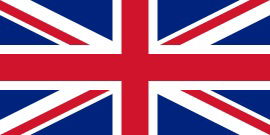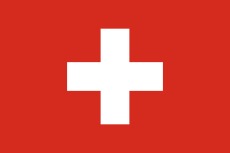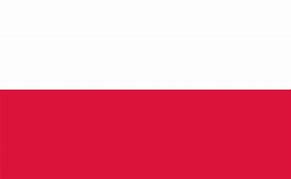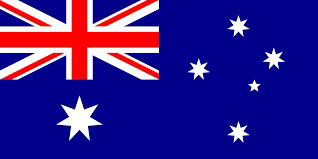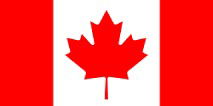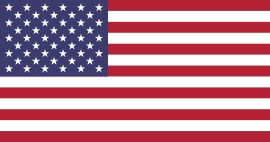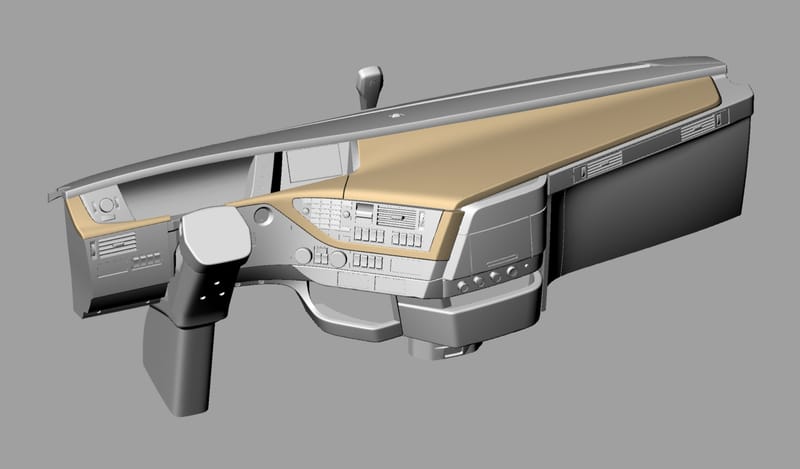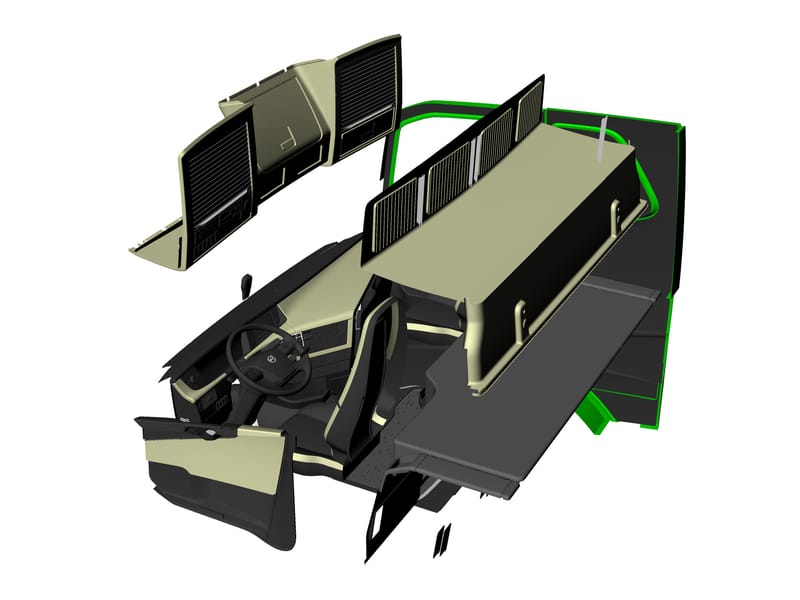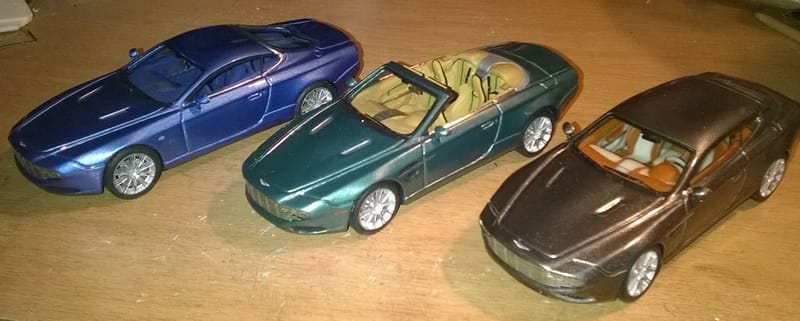Welcome to Rialto Models Online
Exclusive 1:43 Scale Modelcars for Collectors
Extraordinary models for the discerning collector ! When you want to place an order : please read chapter "Ordering info > direct sales" first because not all models are available directly at all times. You can use the order form anyway, after receiving the order we will contact you within 48 hours to discuss delivery time and payment. We do not use a checkout procedure for payments.
Collection 1:43
Current Collection
! new dec. 2024 ! Bristol 412 S1 1975 1:43, Alfa red, ref. AV010
In 1975 Bristol Cars introduced their first open car since years, the 412. Designed by Zagato in Italy. The S1 version of the 412 is recognizable by the frameless doors. However, this construction had the disadvantage that Bristol Cars had to install a mechanism to automatically lower the side window when the removable roof had to be placed on the car. An expensive solution and also the rigidity of the body suffered from this construction. In total 19 cars of the type S1 were built. The first three cars were built by Zagato, later examples were built by Bristol itself. In all cases with supply of aluminium panels from Coachwork Maggiora, Torino, Italy. It is certain that Zagato built one dark red car, so our model represents the car made by Zagato. It has the Pegasus badge on the grille and Zagato logo on the front wing. This model is only available with Dunlop rims with chromed hubcaps. Customers can place an order through the order form, or email us to order. Normally we produce 100 off of our models, but we will produce only 60 off of the 412 S1. So be quick, or be......out of production.
! new dec. 2024 ! Bristol 412 S2 1977 1:43, white, ref. AV011
In the autumn of 1977 the Bristol 412 S2 appeared. The car had hardly changed externally. However, the door windows now had a frame, so that the previously complex problem of sealing the windows and hardtop was no longer necessary. In the meanwhile all the 412 versions were built by Bristol itself. About 10-15 cars of the S2 type were built. Our model has the Bristol badge on the grille. This model is only available with AVON Safety wheels. Customers can place an order through the order form, or email us to order. Normally we produce 100 off of our models, but we will produce only 60 off of the 412 S2. So be quick, or be......out of production.
! new nov. 2024 ! Bristol Beaufort 1984 1:43, primrose yellow, AV014-01
In the beginning of the eighties the automotive world saw a resurrection of full convertible cars. For which the USA is the most important market of the world. Due to a rumor beginning at the start of the seventies that laws in the USA would ban fully convertible cars, producers in Europe ( Jaguar, Lancia, Volkswagen ( Golf ), to name a few ) started to build and sell half-convertible cars with a rollbar for more passenger safety. Bristol 412 is the perfect example for this type of car. Happily that so called "law" never came to fruition and as a result Bristol decided to develop a full convertible car based on the 412 S2.5 series. In 1984 this car was introduced as the "Beaufort". While the car was intended for the USA market it was only available in left hand drive version, albeit with the classic Bristol dashboard layout. Beaufort was equipped with a fully electrically operated folding roof, but the bulkiness of this construction had as a result that there was not enough space left for full size rearseats so one had to be satisfied with a small bench as emergency seating actually only suitable for children. A major drawback for a car of this size that could have been built as a full-fledged four-seater. Probably this is the reason why the car stayed a one-off, and in fact it is a prototype. Though nobody knows exactly why the Beaufort was not taken in series production rumor has it that the director of Bristol Cars - mr. Tony Crook - was indeed not satisfied with the limited usability of the rearseats. mr. Crook decided to keep the car for his own personal use and a few years later it was sold off to a to a regular customer of Bristol Cars. This model will be handbuilt on order only. The model comes standard with GKN wheels, but if you want a different wheel please ask us. Primrose yellow model comes with cream interior and cream convertible top cover. Customers can place an order through the order form, or email us. Normally we produce 100 off of our models, but we will produce only 60 off of the Beaufort. So be quick, or be......out of production.
! new nov. 2024 ! Bristol Beaufort 1984 1:43, midnight blue, AV014-02
See for more information AV014-01. Midnight blue model comes with cream interior and black convertible top cover.
! new oct. 2024 ! Bristol 412 S2.5 1980 1:43, bright solid red, ref. AV013-01
Based on the Bristol 412 of 1975 - designed by Zagato in Italy - this was a major update of the 412 S2. The 412 S2.5 received the same front-end layout of the 1980 Beaufighter with a wider grille, 4 x headlight configuration and indicator lights under the frontbumper. It retained the V8 Chrysler engine and the classic Bristol dashboard layout. The hood received the same bulge for the turbo as the Beaufighter, though sometimes the 412 S2.5 has a turbo ( probably retrofit, with 2 exhaust pipes ), and sometimes not. Mostly this 412 S2.5 is seen as a pure "Beaufighter" while in fact it is not. The real Beaufighter ( our AV012 ) has always a turbo with one exhaust pipe, fixed roof with black cloth equipped with a sunroof and wider rear sidewindows than the S2.5. Around 35 cars of the 412 S2.5 type were built and sold which is a guarantee for exclusiveness for which Bristol is well known. This model will be handbuilt on order only. You can choose some minor options and 6 types of wheels. Customers can place an order through the order form, or email us with desired specification. Normally we produce 100 off of our models, but we will produce only 60 off of the 412 S2.5. So be quick, or be......out of production.
! new oct. 2024 ! Bristol 412 S2.5 1980 1:43, white, ref. AV013-02
For more info see AV013-01
Bristol Beaufighter 1980 1:43, jupiter red metallic ref. AV012-01
Based on the Bristol 412 of 1975 - designed by Zagato in Italy - this was a major update of the 412 called "Beaufighter". This car is equipped with a 5.9 liter V8 engine made by Chrysler USA, charged by a Rotomaster turbocharger. With this mighty unit the car was extremly powerful and fast. The Beaufighter is easily recognizable by the "rectangular" dashboard and single exhaust pipe. Around 30 cars of this type were built and sold which is a guarantee for exclusiveness, for which Bristol is well known. This model will be handbuilt on order only. You can choose some minor options and 5 types of wheels. Customers can place an order through the order form, or email us with desired specification. Normally we produce 100 off of our models, but we will produce only 60 off of the Beaufighter. So be quick, or be......out of production.
Bristol Beaufighter 1980 1:43, metallic blue ref. AV012-02
For more info see AV012-01.
Honda Civic 4-door saloon 1989 1:43, solid red or maroon metallic, ref. AV016-02
In 1987 Honda introduced the 4th generation of the Civic. This was an enormous leap in quality and performance for the Civic. With this car Honda finally penetrated the market for premium cars. In general the 4th gen Civic was praised by the international motoring press for high build quality, performance, roadholding, double-wishbone suspension and their advanced 16-valve engines which were considered "jewels" in engine technology. The 1989 version was a mild facelift with a slightly different frontbumper and different rearlights and a red bar in between the rearlights. Chassiscodes for the 1989 4-door saloon were ED3 ( 1.5 liter fuel-injection engine ), ED4 ( 1.6 liter SOHC fuel-injection engine ) and ED5 ( which was the same as ED4 but with all-wheel drive ) for the LHD versions. RHD versions for Japan ( Australia, New Zealand, RHD Asia, maybe UK ) had chassiscodes EF3, EF4 and EF5 respectively. There were some slight differences in details regarding lighting depending upon country of admission. So we will build these Civic models on order only, custom built. And of course you can choose LHD or RHD versions. Until now no model of this Civic was ever available in 1:43. Customers can place an order through the order form, or email us with desired specification.
Honda Civic 4-door saloon 1987 1:43, montreal blue metallic, ref. AV016-01
In 1987 Honda introduced the 4th generation of the Civic. This was an enormous leap in quality and performance for the Civic. With this car Honda finally penetrated the market for premium cars. In general the 4th gen Civic was praised by the international motoring press for high build quality, performance, roadholding, double-wishbone suspension and their advanced 16-valve engines which were considered "jewels" in engine technology. Chassiscode for the 1987 4-door saloon were ED2 ( 1.4 liter double-carb engine ) and ED3 ( 1.5 liter double-carb or fuel-injection engine ) for the LHD versions. RHD versions for Japan, ( Australia, New Zealand, RHD Asia, maybe UK ) had chassiscode EF2 and EF3 respectively. There were some slight differences in details regarding lighting depending upon country of admission. So we will build these Civic models on order only, custom built. And of course you can choose LHD or RHD versions. Until now no model of this Civic was ever available in 1:43. Customers can place an order through the order form, or email us with desired specification.
FIAT 127 Coriasco Furgoncino 1972 1:43, blue, ref. RM054
Carrozzeria Coriasco in Torino offered a 127 1st series stationwagon ( familiare ) version from modelyear 1972 on because FIAT did not offer this version. In contrast to the standard 127 the panel-van was much more practical with a generous loading space. It is not known how many panel-vans were produced by Coriasco on the 127 chassis, but probably not more than hundred. The panel-van is a limited edition of 25 models only.
FIAT 127 Coriasco Familiare 1972 1:43, turchese farfalla, ref. RM054
Carrozzeria Coriasco in Torino offered a 127 1st series stationwagon ( familiare ) version from modelyear 1972 on because FIAT did not offer this version. In contrast to the standard 127 the van was much more practical with a generous luggage space and foldable rearseat. It is not known how many cars were produced by Coriasco on the 127 chassis, but probably a few hundred. Also 2nd and 3rd series. We will supply the van ( furgoncino ) version in a limited edition of 10 - 25 off later.
FIAT 127 4-door Lucciola Lombardi 1972 1:43, blue, ref. RM053
When introduced in 1971 FIAT did not offer a 4-door version of the 127 and in their great tradition Carrozzeria Lombardi in Vercelli Italy offered from 1972 on their own version of a 4-door 127, called Lucciola ( like their 600 and 850 4-door versions ). As usual they offered a car with considerably more headroom above the rearseats and a much more generous glasshouse than the standard 127. Styling of Lombardi's 127 was very elegant and quite exclusive, though with an elevated price. Only the front-end of the car is identical to the standard 127 for the rest all the bodywork is completely different from the standard 127. To our knowledge no more than 50 cars have been built and sold by Lombardi. The introduction of the SEAT 4-door version in 1973 ( our AV015 ) must have hampered sales of the Lucciola version a lot.
FIAT /SEAT 127 4-door 1973 1:43, red or white, ref. AV015
In Spain particularly 4-door cars ( eventually with a trunk ) were always very popular. Fiat in Italy did not provide a 4-door version of the 127. So the SEAT factory in Barcelona developed their own 4-door version of the 127 in 1972 and it was available from modelyear 1973 on. In certain markets ( like Italy ) the car was marketed as a Fiat. But in fact all these 4-door 127's were made in Barcelona.
FIAT 850 giardiniera Carrozzeria Caprera 1964 1:43, ref. RM052
In 1964 at the Turin Autoshow Caprera presented their stationcar ( in Italian "giardiniera" ) version on base of the recently released Fiat 850. It was produced on special customer request and made in small numbers, approx. 50 - 100 off.
DAF 30 Coupe Prototype 1962 1:43, ref. RM051
In 1962 the DAF factory in Eindhoven produced a very elegant proposition for a small DAF Coupe based on the type "30" chassis. It can be considered a one-off prototype which never went into production. Apparantly the design was done completely "in house" without cooperation of a coach builder. Rumour has it that the car was completely street-legal and was in use by the managing board of the DAF factory. A few years after production the car has disappeared from view and nobody knows where the car is now or if it still exists. Though there are still a handful of pictures showing the car in drivable condition. Anyway, the car has been revived by us, though in a 43 times smaller size.
TVR 3000 S Convertible 1979 1:43, red ref. AV009
Introduced in 1979 this was the first TVR convertible ever made that went into series production. The car was available in atmosferic and turbo versions, equipped with the legendary Ford V6 3.0 liter engine. Until now no model was available of the 3000 S in 1:43rd scale and we are hoping to fill a gap in TVR modelcar collections. Standard this model will be equipped with Wolfrace wheels, on special order T-Slot wheels are available. See Blog for custom/bespoke 3000 S models.
TVR 3000 S Convertible 1979 1:43, metallic blue ref. AV009
Introduced in 1979 this was the first TVR convertible ever made that went into series production. The car was available in atmosferic and turbo versions, equipped with the legendary Ford V6 3.0 liter engine. Until now no model was available of the 3000 S in 1:43rd scale and we are hoping to fill a gap in TVR modelcar collections. Standard this model will be equipped with Wolfrace wheels, on special order with T-Slot wheels from October 2022. See Blog for custom/bespoke 3000 S models.
SEAT 850 4-door "corto" carrozzeria Costa 1967 1:43, ref. RM050se
A special version of the SEAT 850 for Spanish customers wanting more comfort with four doors. Made in limited numbers by coachwork Costa in Barcelona ( exactly 419 off were made between 1967 - 1969 ) with parts delivered from Italy. The car is the same as the Lombardi Lucciola, but it has SEAT decals and the distinctive SEAT ornament ( with small horns ) on the front face of the car. This car is known as the "corto" version. Later SEAT made their own "lungho" version with a slightly longer wheelbase and a more rounded shape at the rear-end of the car. The "corto" model comes in red, with a brown interior. ! We will only produce 10 models of the SEAT !
FIAT 850 Special 4-door "Lucciola" Carrozzeria Francis Lombardi 1967 1:43, ref. RM050sp
Francis Lombardi made a handful of 850 "special" versions of the 4-door Lucciola in 1967 - 1968. 850 Special is equipped with the more powerful 903 cc engine and has perforated disc wheels to provide cooling for the front disc brakes. The model comes in ivory exterior color with a brown interior. ! We will only produce 10 models of the 850 Special !
FIAT 850 4-door "Lucciola" Carrozzeria Francis Lombardi 1965 1:43, ref. RM050
A very special version of the FIAT 850 for demanding customers wanting more comfort with four doors. Made in limited numbers ( probably two hundred ) by Carrozzeria Francis Lombardi in Italy. 21-02-2024 : only 6 models can be made from now on ( including the Special and SEAT Costa versions ), after that production will end.
Bristol Blenheim S3 1999 1:43, metallic blue ref. AV008
The third series of the Blenheim, introduced in the autum of 1999 and produced in limited numbers until around 2005.
Bristol Blenheim S3 1999 1:43, metallic silver ref. AV008
The third series of the Blenheim, introduced in the autum of 1999 and produced in limited numbers until around 2005. The owner of a specific silver metallic car gave us permission to use the original registation numbers on his car on all of our silver metallic models.
Ginetta G40 2010 1:43, ref. AV007, orange
Very nice compact streetlegal sportscar based on the G40 cup racer. Every detail of this model is well reproduced, including the headlight units made of a black base part with added lenses, a decal for indicator lights and a vacform on top. The dashboard is intricately detailed with white and silver decals, and the Rimstock wheels are faithfully reproduced in miniature. Also we have included the visible parts of the rollbar in the interior.
Ginetta G40 2010 1:43, ref. AV007, metallic silver, with rearspoiler
Very nice compact streetlegal sportscar based on the G40 cup racer. Every detail of this model is well reproduced, including the headlight units made of a black base part with added lenses, a decal for indicator lights and a vacform on top. The dashboard is intricately detailed with white and silver decals, and the Rimstock wheels are faithfully reproduced in miniature. Also we have included the visible parts of the rollbar in the interior.
Ginetta G32 Coupe 1989 1:43, ref. AV006, red ( Ford XR2i based)
Attractive sports Coupe ( Ford Fiesta Mk2 XR2i based ) built by Ginetta from 1989-1992. Around 115 cars were completed by Ginetta. This was Ginetta's return to the market for complete factory build cars. The model has the Fiesta Mk2 RHD dashboard.
Morris Mini Sport Zagato 1961 1:43, ref. RM048
Zagato's attempt to build a lightweight body on Morris Mini Traveller platform. Did not make it to production and only one car was built in 1961 in aluminum. Design by Ercole Spada.
Hillman Imp Sport Zagato 1963 1:43, ref. RM047
Zagato's attempt to build a lightweight body on Hillman Imp platform. Did not make it to production and only three or four cars were built in 1963 in aluminum. Design by Ercole Spada.
Rolls Royce Silver Wraith Ghia 1952 1:43, ref. RM046
One-off LHD car built by the famous coachworks Ghia Torino.
TVR Trident Convertible 1965 ( Griffith based ) 1:43, ref. RM045d
One prototype built by Fissore in Italy, prior to bankrupcy of TVR. This was Martin Lilley's personal car.
TVR Trident Coupe 1965 ( Griffith based ) 1:43, ref. RM045c
three prototypes built by Fissore in Italy shortly before bankrupcy of TVR. all cars do still exist
Porsche 989 1989 4-door prototype 1:43, ref. AV004b metallic blue
apparantly Porsche built more than one 989 in full scale, this car was metallic blue and equipped with the contemporary Design 90 wheels ( made by O.Z. ) which were also fitted to the Porsche 928. it seems that the blue car was fully functional and has been used for road testing.
Porsche 989 1988 4-door prototype 1:43, ref. AV004, silver metallic
initiated from 1985 this was Porsche's attempt to produce a four-door full 4-seater, project was cancelled in 1991 due to high production cost. finally it was the initiator of the succesfull Panamera introduced in 2009.
Aston-Martin DB3/3 1953 ( Roy Salvadori ), ref. RM043
one-off body by Vignale from Italy for DB3/3 chassis, in 1959 the body was moved to a Ferrari 340 America !
Rover 2000 TC Zagato Coupe 1967 1:43, ref. RM042
one-off protoype by Zagato from Italy, never made it to production.
SS Jaguar 3.5 liter Coupe by Graber 1938 1:43, king's blue, ref. RM041
Wonderful body by Graber, made in 1938 on Jaguar 3.5 liter chassis, this is a one-off. When delivered by Graber to the customer who gave the order to build a bespoke body the car was most likely black over grey. In the nineties the car was painted royal blue (similar to king's blue ). The car still exists and was repainted around 2011 in silver metallic.
SS Jaguar 3.5 liter Coupe by Graber 1938 1:43, silver metallic, ref. RM041
One-off body by Graber, made in 1938 on Jaguar 3.5 liter chassis. For the short story of this car see info on the blue model above.
Aston-Martin DB2/4 Drophead Graber 1954 1:43, ref. RM040
One-off made by famous Graber coachworks from Switzerland. The car is in the USA now, extensively restored in 2009 by Kevin Kay Restorations in Redding CA. Originally the car was painted in green by Graber, but after restoration it was repainted in warwick grey. Kevin Kay purchased two of our models, one as a gift for his customer and one for his own showcase.
MG-TD Bertone Coupe 1952 1:43, ref. RM037
The "savior" of coachworks Bertone Italy, only 66 LHD cars were built for export to the USA, imported by Arnolt. The Coupe model will come with Dunlop disc wheels.
MG-TD Bertone Drophead 1952 1:43, ref. RM037d
The "savior" of coachworks Bertone Italy, only 33 LHD cars were built for export to the USA, imported by Arnolt. The Drophead model will come with wire wheels.
Jaguar Mk2 Coupe prototype 1964 1:43, ref. RM035
in 1964 an unknown UK based coachbuilder built one Mk2 Coupe prototype on a slightly shortened Mk2 chassis, with the 3.8 liter XK engine. Jaguars Cars Ltd. saw nothing in a production model because an Mk2 Coupe 2+2 would compete with their upcoming 2+2 E-Type.
Maserati A6G/54 Zagato 1954 1:43, ref. RM025 red
the first bodystyle of 20 A6G/54 chassis bodied by Zagato.
Maserati A6G/54 Zagato 1954 1:43, ref. RM025 blue
the first bodystyle of 20 A6G/54 chassis bodied by Zagato.
Lancia Appia GTS Zagato 1957 1:43 ref. RM019
Zagato's version of the coachbuilder's chassis based on Appia 2nd series. Approximately 150 cars were built by Zagato on this chassis. GTS bodies were similar with some minor detail differences.
Jaguar Mk2 Drophead Vicarage 1:43, ref. RM005
Made in 1990 this was Vicarage's attempt to build an Mk2 Drophead. Total production numbers are unknown, it is believed that approx 16 Mk2's were converted to Dropheads. On special request one Daimler V8 2.5 was converted too in exactly the colors of our Mk2 model.
Collection OOP 1:43
Models out of production ( OOP ) and can not be ordered anymore
DAF 32 Royal Dutch Beachcar, Carozzeria Giovanni Michelotti 1966 1:43, ref. RM049
In 1966 carozzeria Michelotti of Torino Italy built this one-off beachcar on base of the DAF 32 variomatic chassis. The car was created by the famous and prolific designer Giovanni Michelotti and delivered to the DAF factory in Eindhoven, The Netherlands. In the same year the car was given to the Dutch Royal family who used the beachcar for many years near their summer residence in Porto Ercole, Italy. Since 1996 the beachcar is on display in the DAF Museum in Eindhoven. It is nicknamed "DAFKini".
Bristol Fighter 2003 1:43, ref. AV005
Super sportscar made by Bristol Cars from 2003 - 2011, about 13 - 15 cars were finished before production stopped. This car is Dodge/Chrysler Viper based. The most impressive car ever made by Bristol.
FERRARI 212 VIGNALE CH. 0205EL 1:43, REF. AV003
has the same body as the Aston-Martin DB3/3, our ref. RM043
FERRARI 340 AMERICA VIGNALE CH. 0196A 1:43, REF. AV002
has the same body as the Aston-Martin DB3/3, our ref. RM043
Alfa Romeo Giulietta Ghia Study 1955 1:43, ref. RM038 black
one-off protoype by carrozzeria Ghia from Italy, never made it to production.
Jaguar XK150 Shooting Brake WSM, built 1967, ref. RM034
In 1967 coachbuilder WSM of the UK has built this one-off shooting brake on customer specification. The car was nicknamed "The Tow Car" because - besides as a service car - it was used too for transporting racing cars.
Bristol 406 Zagato GT 2+2 1960 1:43, ref. RM033
six cars built in lightweight aluminium on Bristol 406 standard chassis by Zagato in Italy, 1960.
BRISTOL 406 ZAGATO GT SWB 1960 1:43, REF. RM016
one strict two-seater car built in lightweight aluminum on Bristol 406 short chassis by Zagato in Italy, 1960.
AC-BRISTOL ZAGATO GT COUPE 1958 1:43, REF. RM013
Probably two Coupe cars built by Zagato Milano on AC Ace chassis, combined with the 2.2 liter Bristol engine. Certainly one car still exists and was first registered in the Vaude/Waadt kanton in Switzerland. Once this car was owned by famous swiss racing driver Jo Siffert.
Lancia Appia GTE sperimentale Zagato 1959 1:43 ref. RM017
Zagato's first version of the Appia GTE based on Appia 3rd series chassis. A handful of cars were built by Zagato with this bodystyle.
Jaguar XK140 Zagato 1957 1:43, ref. RM008
Around 1957 famous coachbuilder Zagato aquired a wrecked XK140, repaired the chassis and mechanics. The owner of the car asked Zagato to build a lightweight body on the chassis. For years the car was in Italy, later sold to the USA and it is unknown where the car is now.
Ordering info / Where to buy
Projects
Please have a look at current and past projects
CAD development of dashboard for 1:14 RC truck. target : production of metal mould for ABS plastic injection moulding.
CAD development of complete interior for 1:14 RC truck. target : production of metal mould for ABS plastic injection moulding.
CAD development of bodyshell for a one-off car which once belonged to an Italian Countess, seen on the picture is shown the hard-pattern to make the moulds for resin casting. The model is available now, see our collection page.
Aston Martin Zagato Centennial
Read MoreBlog
About
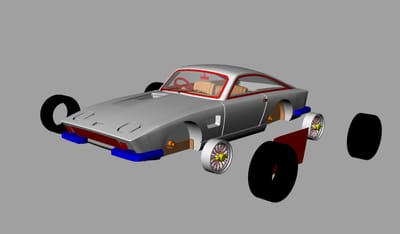
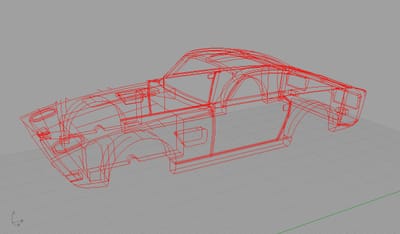
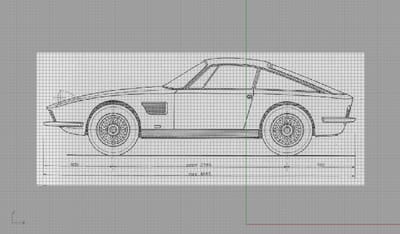
When you would like to order a model please contact us and we will reply as quick as possible. Our models are no mass produced goods so we strongly believe in a personal contact with all our customers to achieve the best results. We wish you a very nice day and we will be happy to answer all your enquiries.
- wij communiceren ook in Nederlands
- wir können auch in Deutsch kommunizieren
- possiamo anche comunicare in italiano
- nous pouvons aussi communiquer en français
- możemy również porozumieć się po polsku
Your privacy
Rialto Models respects the privacy of all users of its site and ensures that the personal information you provide is treated confidentially. We use your data to process orders as quickly and easily as possible. If we use your data for other purposes, we will only use this data with your permission. Rialto Models will not sell your information to third parties and will only make it available to third parties that are involved in processing your order.
Rialto Models uses the collected data to provide its customers with the following services:
- When you place an order, we need your name, e-mail address, delivery address and payment details to process your order and to keep you informed of its progress.
- In order to make shopping at Rialto Models as pleasant as possible and to better tailor the offer to your wishes, we store your personal data and the data regarding your order and the use of our services with your permission.
- We may use your email address to further inform you about the order and about special offers and promotions. If you do not wish to receive these emails, you can unsubscribe by sending an email to rialtomod@hetnet.nl with subject "unsubscribe" and we will remove you from our mailing-list. Though we would be sorry to see you go.
- When you place an order with Rialto Models, we store your data in our database. We will save your name and address, telephone number, e-mail address, specific interest of collecting, delivery and payment details, so that you do not have to re-enter them with every new order. Data about the use of our site and the feedback we receive from our visitors help us to further develop and improve our site. Your data are stored safely in a database accessible only by Janet Miedema, this database is not connected to the internet. Your email address is stored on our secure local mailinghost.
Rialto Models will not sell your data
Rialto Models will not sell your personal information to third parties and will only make it available to third parties that are involved in processing your order. Our employee and third parties engaged by us are obliged to respect the confidentiality of your data. Currently we use shipping services of Post.nl and DHL so your email-address is "loosely" shared with these companies so that you will receive information about your shipment directly from them, and your email address is not used by them for any promotions.
Cookies
Cookies are small pieces of information that are stored on your computer by your browser. Rialto Models uses cookies to recognize you on your next visit. Cookies enable us to collect information about the use of our services and to improve and adapt them to the wishes of our visitors. Our cookies provide information concerning personal identification. You can set your browser so that you do not receive cookies while shopping at Rialto Models.
If you have any questions about privacy at Rialto Models, please contact us. Our customer service will help you if you need information about your data or if you want to change it. In case changes to our privacy statement should be necessary, you will always find the most recent information on this page. P.S. besides our hosting provider Site123, eventually searchengines such as Google can track your activity with Cookies as well.
Contact
- Parkdreef 173, 2724 ET Zoetermeer, South Holland, Netherlands


